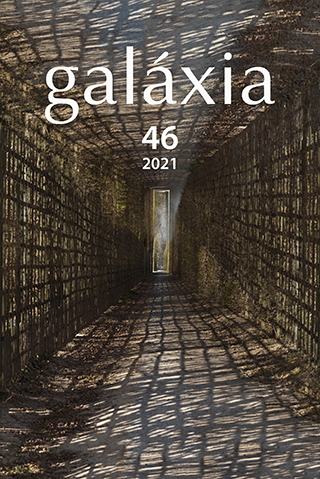Transparency of epidemiological and financial-budget information on the COVID-19 pandemic in Brazilian state governments
Keywords:
data transparency, Brazil, state government, COVID-19 pandemic, states' websitesAbstract
This paper evaluates the levels of data and information transparency of state governments and the Federal District (DF) regarding the COVID-19 pandemic. Websites of the states and DF were prospected. A quantitative qualitative methodological instrument was developed for categorizing and collecting the information. The transparency of epidemiological and financial-budgetary information regarding the COVID-19 pandemic was assessed. Subsequently, it was verified whether socioeconomic and epidemiological variables can explain the transparency index of state governments, but the tests did not reveal causality between such variables and the transparency indexes. Contrary to what was expected, Brazilian states publish more information about pandemic data and data that helps managers' decision making than financial-budgetary information. Thirteen of the states showed advanced transparency, and 13 moderate transparency and one, poor transparency. HDI and monthly income are the variables that explain the levels of transparency measured.
References
ALMADA, M. P. Avaliação da Etransparência em Portais De Governos Nacionais: Uma Comparação entre Brasil, Estados Unidos e Reino Unido. 2017. Tese de Doutorado defendida junto ao Programa de Pós Graduação em Comunicação e Cultura Contemporâneas da Universidade Federal da Bahia, Salvador, 2017. Disponível em: https://www.academia.edu/35420388/AVALIAÇÃO_DA_ETRANSPARÊNCIA_EM_PORTAIS_DE_GOVERNOS_NACIONAIS_UMA_COMPARAÇÃO_ENTRE_BRASIL_ESTADOS_UNIDOS_E_REINO_UNIDO. Acesso em 07 de junho de 2021.
ALWAN, N. et al. Evidence informing the UK’s COVID-19 public health response must be transparent. The Lancet, v. 395, n. 10229, p. 1036–1037, 2020.
BALDISSERA, J. F. et al. Influência dos aspectos socioeconômicos, financeiro-orçamentários e político-eleitorais na transparência dos governos locais. Revista de Administração Pública, v. 54, n. 2, p. 340-359, 2020.
BARTON, C. M. et al. Call for transparency of COVID-19 models. Science, v. 368, n. 6490, p. 482–483, 2020.
AMORIM, P. K. Democracia e Internet: A Transparência de Gestão Nos Portais Eletrônicos Das Capitais Brasileiras. 2012. Tese de Doutorado defendida junto ao Programa de Pós Graduação em Comunicação e Cultura Contemporâneas da Universidade Federal da Bahia, Salvador, 2012.
BRASIL. Decreto No 8.777de 11 de maio de 2016. Brasília, 2016. Disponível em: <http://www.planalto.gov.br/ccivil_03/_Ato2015-2018/2016/Decreto/D8777.htm>. Acesso em: 21 de julho de 2020.
______. Lei Complementar 101, de 04 de maio de 2000. “Lei de Responsabilidade Fiscal”. Disponível em: http://www.planalto.gov.br/ccivil_03/leis/LCP/Lcp101.htm. Acesso em 21 de julho de 2020.
______. Lei Complementar 131, de 27 de maio de 2009. “Lei da Transparência”. Disponível em: http://www.planalto.gov.br/ccivil_03/leis/LCP/Lcp131.htm. Acesso em 21 de julho de 2020.
______. Lei de Acesso à Informação Pública: Lei nº 12.527, de 18 de novembro de 2011. Disponível em http://www.planalto.gov.br/ccivil_03/_Ato2011-2014/2011/Lei/L12527.htm Acesso em 21 de julho de 2020.
______. Lei Nº 13.979, de 6 de fevereiro de 2020. Disponível em: <http://www.planalto.gov.br/ccivil_03/_ato2019-2022/2020/lei/l13979.htm> Acesso em 21 de julho de 2020.
CHENG, Z. J.; SHAN, J. 2019 Novel coronavirus: where we are and what we know. Infection, v. 48, p. 155-163, 2020.
GAO, X.; YU, J. Public governance mechanism in the prevention and control of the COVID-19: information, decision-making and execution. Journal of Chinese Governance, v. 5, p. 178-197, 2020.
GOMES, W., AMORIM, P.K., ALMADA, M.P. Novos Desafios Para a Ideia de Transparência Pública. E-Compós: Revista da Associação Nacional dos Programas de Pós-Graduação, v. 21, n. 2, p. 21, 2018.
HENKE, N.; KELSEY, T. Transparency — the most powerful driver of health care improvement? Health International, v. 11, p. 64-73, 2011.
LA, V. P. et al. Policy Response, Social Media and Science Journalism for the Sustainability of the Public Health System Amid the COVID-19 Outbreak: The Vietnam Lessons. Sustainability, v. 12, n. 7, p. 2931, 2020.
MACHADO, C.; SANTOS, J. G.; SANTOS, N.; BANDEIRA, L. Scientific [Self] Isolation. São Paulo: LAUT, 2020. Disponível em: https://laut.org.br/scientific-self-isolation. Acesso em 5 de abril de 2021.
O’MALLEY, P.; RAINFORD, J.; THOMPSON, A. Transparency during public health emergencies: From rhetoric to reality. Bulletin of the World Health Organization, v. 87, p. 614–618, 2009.
OJIAGU, N.; NZEWI, H.; ARACHIE, A. Accountability And Transparency In Nation Building: A Covid-19 Experience In Sub-Saharan Africa. International Journal of Public Policy and Administration Research, v. 7, n. 1, p. 23-33, 2020.
RAHIMI, F.; ABADI, A. T. B. Transparency and information sharing could help abate the COVID-19 pandemic. Infection Control & Hospital Epidemiology, v. 41, n. 11, p. 1366-1367, 2020.
RAJAN, D. et al. Governance of the Covid-19 response: a call for more inclusive and transparent decision-making. BMJ Global Health, v. 5, n. 5, p. e002655, 2020.
RECUERO, R.; SOARES, F. O Discurso Desinformativo sobre a Cura do COVID-19 no Twitter: Estudo de caso. E-Compós, 2021.
SRIDHAR, D.; BATNIJI, R. Misfinancing global health: a case for transparency in disbursements and decision making. The Lancet. v.372, n. 9644, p. 1185-1191, 2008.
Downloads
Published
How to Cite
Issue
Section
License
Copyright (c) 2021 Maria Paula Almada, Camilo Aggio, Paula Karini Amorim, Nina Santos, Maria Dominguez Costa Pinho

This work is licensed under a Creative Commons Attribution 4.0 International License.
I cede the copyrights to publication of my article to Galaxia journal and will consult the journal’s scientific editor should I decide to republish it later in a book.



 Este obra está licenciada com uma Licença
Este obra está licenciada com uma Licença 